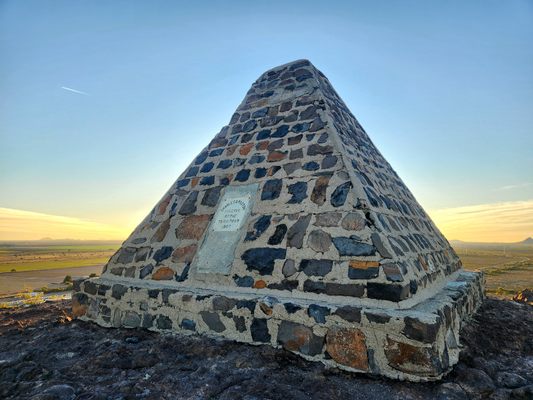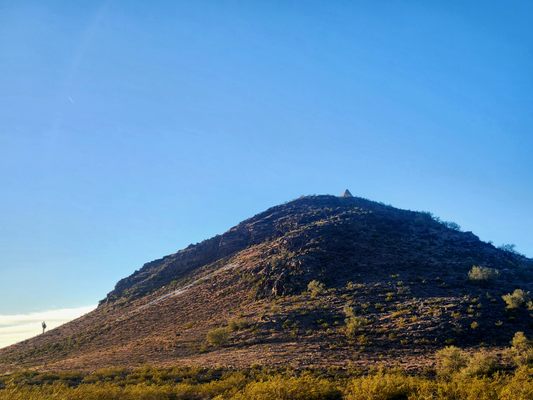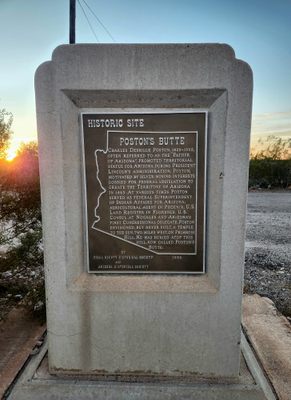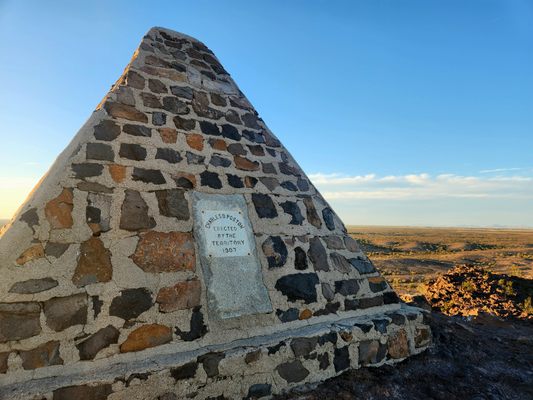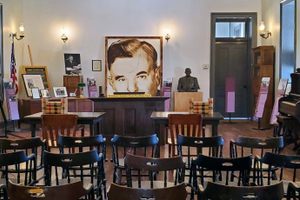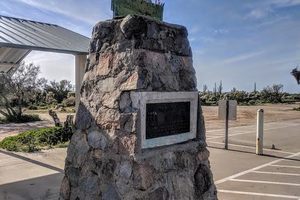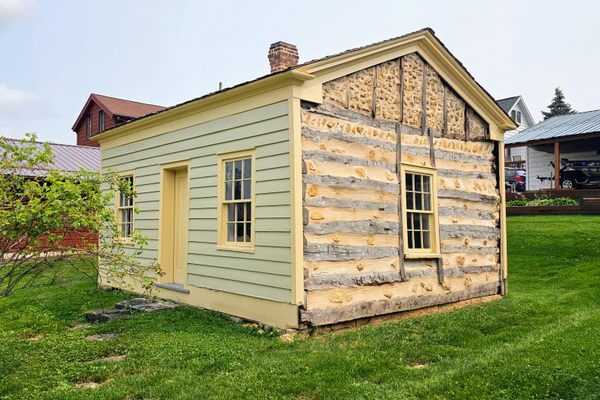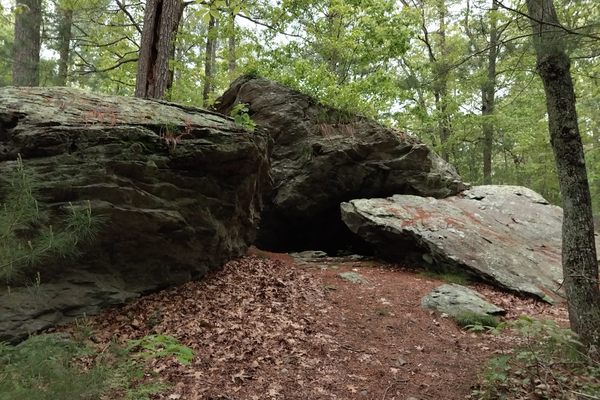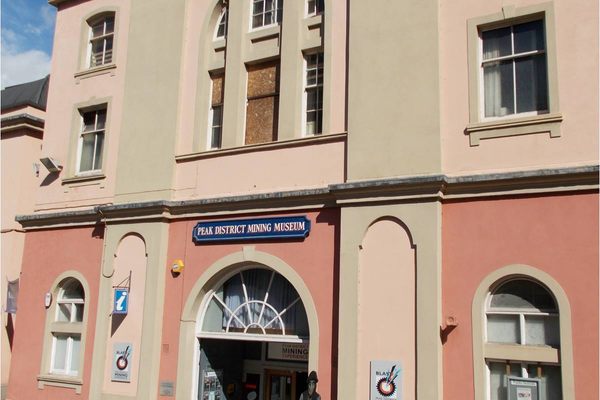About
Charles Debrille Poston, once known as the Father of Arizona, is a nearly forgotten historical figure today. Regarded as both an esteemed statesman and a wild eccentric in his time, he is now buried in a pyramid tomb atop a hill outside the town of Florence.
Poston was born in Kentucky on April 20, 1825. By the time he was 12, he became an orphan. At 19, he moved to Nashville, Tennessee, where he worked as a clerk for the Tennessee Supreme Court. After hearing of the discovery of gold in California, he moved to San Francisco. There he heard about the pending Gadsden Purchase, the United States' purchase of nearly 30,000 square miles in what is today southern Arizona and New Mexico, and raced to be among the first Americans to stake a claim there.
Taking a boat from San Francisco to the Mexican city of Guaymas, he was shipwrecked and briefly arrested by Mexican officials who worried that he was a scout for a potential American invasion. Upon his release, he made his way north and surveyed potential locations to set up mining claims. After a few years of enticing investors, he returned to Arizona with $2 million and established the Sonora Exploring and Mining Company in 1856.
He began calling himself “Colonel” Poston and ruled his mines as a business, political, and religious leader. He printed his own money and presided over marriages, divorces, and baptisms among the families of his workers. When the Catholic Church heard about this, they sent someone to investigate and a scandal was avoided when Poston agreed to make a $700 donation to the Church and his ceremonies were retroactively made legitimate. Soon his mines were among the most successful in the territory and he became one of the wealthiest men in the area.
When the American Civil War broke out in 1861, Charles Poston was an outspoken supporter of the Union and President Lincoln. It was during this time that he traveled to Washington, D.C., and began advocating on behalf of Arizonans. At this time, Arizona was still part of the New Mexico territory and Poston soon became one of the key figures in convincing Congress and President Lincoln to split the western side of the territory into a separate entity. Afterward, Poston became Arizona's first representative in Congress, although he lost reelection a few years later.
After his electoral defeat, he traveled widely. The United States government occasionally recruited him for various diplomatic missions, including to China, India, and the Middle East. It was during this period that he became enraptured by Zoroastrianism. He wrote several books on the subject and may have even converted to the ancient Iranian religion.
When he returned to Arizona in 1877, he received an appointment to the General Land Office in Florence, Arizona, where he found ruins of an Apache structure on the top of Primrose Hill. Given his infatuation with Zoroastrianism, he baselessly concluded that the ruins were the remains of an Apache temple to a sun god similar to the Zoroastrian fire temples of Iran.
He used his remaining wealth to construct a Zoroastrian fire temple on the hill's summit. When he ran out of money, he unsuccessfully appealed for donations, including sending a letter to the Shah of Iran. Over the years, what little construction he completed of the temple was torn down. Today only the road he built to the summit partially survives as a hiking trail.
By the late 1890s, Poston had drifted into obscurity. Those who did remember him largely regarded him as an oddity. By that point, he was living in near poverty. The local legislature took pity on him and passed a bill granting him a $25-a-month pension in thanks for his prior service. He died in 1902 in Phoenix and was buried in a pauper's grave in the capital, despite his stated wishes to be buried atop the hill where he attempted to build his Zoroastrian fire temple.
In 1925, on the 100th anniversary of Poston's birth, his final wishes were honored. His remains were exhumed and he was reinterred in a pyramid built by the state government in a ceremony presided over by the governor of Arizona. Primrose Hill was renamed Poston Butte and today is managed by the city of Florence, Arizona as a park.
Related Tags
Know Before You Go
Poston Butte is open sunrise to sunset each day and admission is free. There is parking on the shoulder of Hunt Highway (13993 W Hunt Hwy, Florence, AZ 85132, United States) and a half-mile trail goes from the parking area to the summit of Poston Butte.
Community Contributors
Added By
Published
January 11, 2023
Sources
- https://www.azcentral.com/story/travel/local/history/2014/03/25/arizona-father-charles-poston/6870811/
- https://azmarkers.arizonadar.org/charles-postons-tomb.html
- https://oac.cdlib.org/findaid/ark:/13030/c8xs5wrb/entire_text/
- http://www.zoroastrian.org.uk/vohuman/Article/Charles%20Debrille%20Poston%20The%20Fire%20Worshipper%20(1852-1902).htm
- https://www.worldcat.org/title/12559708
- https://www.amazon.com/Arizona-Bicentennial-Lawrence-Clark-Powell/dp/0393055752?asin=B010D4DDQU&revisionId=&format=2&depth=1
- https://archive.org/details/arizonapanoramic00trim/page/n17/mode/2up
- https://www.anb.org/search?q=charles+debrille+poston&searchBtn=Search&isQuickSearch=true
- https://kids.britannica.com/students/article/Charles-Debrille-Poston/333609
- https://www.miningfoundationsw.org/Charles_Poston
- https://www.ajpl.org/charles-poston/
- https://history.house.gov/People/Listing/P/POSTON,-Charles-Debrille-(P000458)/
